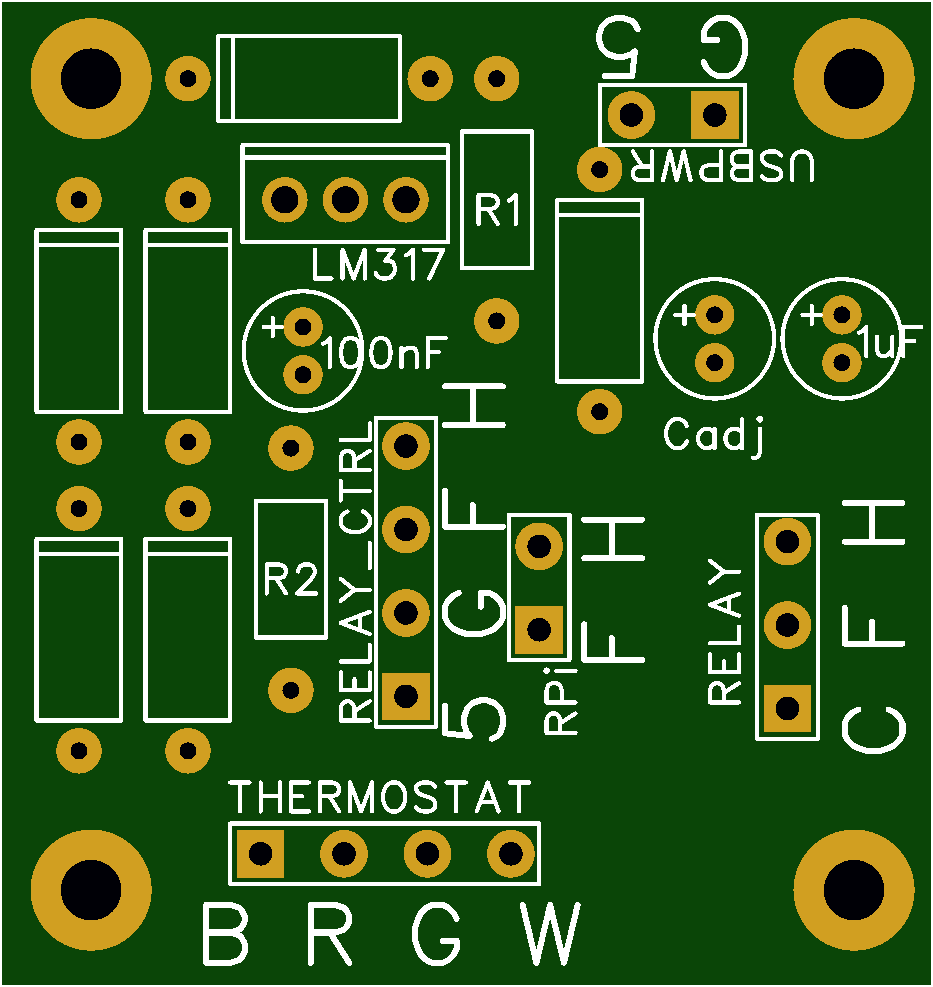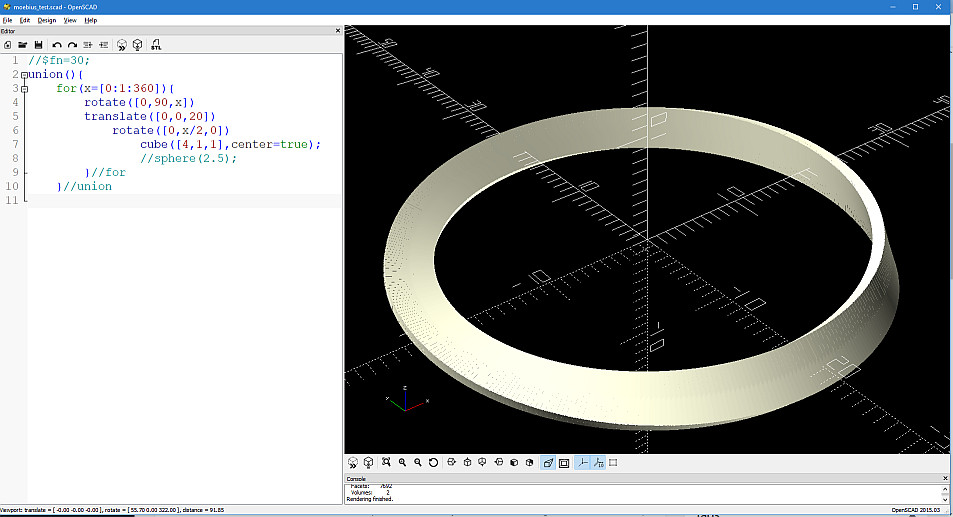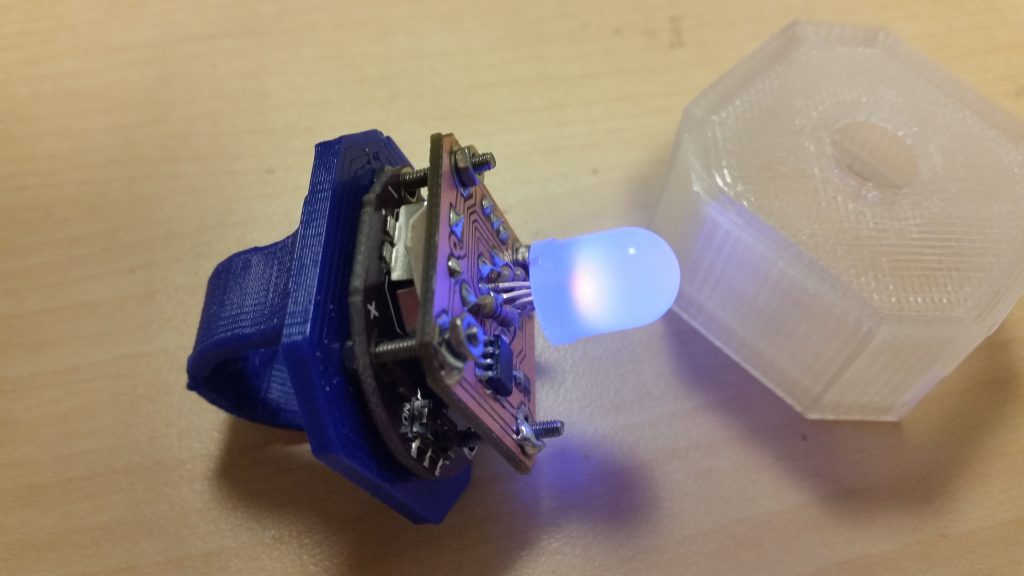The Maker revolution generally encourages adding to the repertoire of processes that can readily be done at home. Desktop soldering stations, multimeters, and power supplies have been available for decades; oscilloscopes have been getting more affordable recently, and the recent explosion of 3D printer technology has really made a lot of things possible.
The production of good quality circuit boards, however, is still a challenge. I can produce more-or-less-acceptable 2-layer boards on our LPKF PC board mill at work, but producing good circuit boards at home either requires a lot of patience and toxic chemicals or a circuit board mill costing probably into four figures. And even then, the boards produced lack through-hole via plating, solder mask, and silkscreen, and are generally cruder and less reliable than any industry standard. Some processes still require expensive equipment to do well.
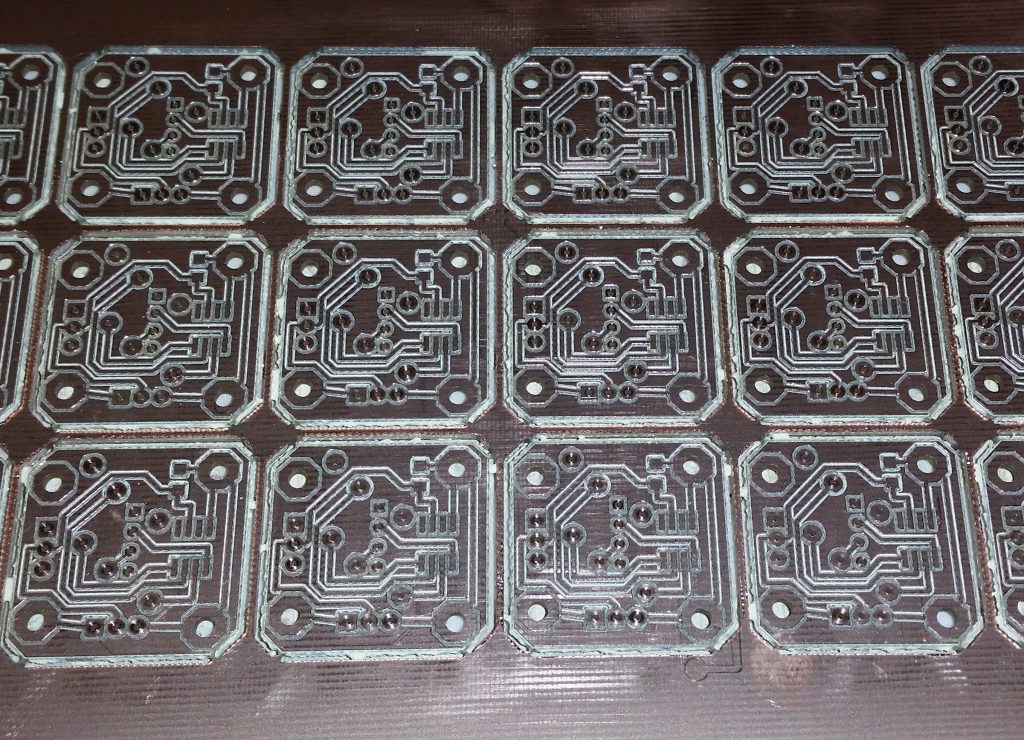
Some circuit boards, freshly milled on the LPKF desktop mill at work.
Recently, however, a number of DIY-friendly, low-quantity solutions for getting PC boards made have become available. I recently placed an order for ten PC boards with JLCPCB.com. Here’s how that went, and why I now have another go-to vendor for my list of favorites.
The process starts by creating a set of Gerber files. This is usually done automatically by PC board CAM software like Eagle CAD. I’ve been using FreePCB for years to make our boards at work, so I decided to see how it did.
The test board (which needs several revisions, but that’s expected) is mostly a 24VAC-to-5VDC power supply for a Raspberry Pi and relay module, along with some extra connections to make hookup easier. I created the design in FreePCB, exported the Gerber files, and then uploaded the design to JLCPCB’s site. Design took a few hours; the upload and ordering process took maybe half an hour since I was unfamiliar with it. Now that I’m signed up and everything, future orders will probably take more like ten minutes.
…and that was it, really. I got a couple of emails later that day saying the boards had started production (even though it had to have been something like midnight in Shenzhen.)
Less than a week later, an express DHL shipment arrived. The boards look quite good, especially considering I paid $2.00US for the whole ten-pack. Shipping was just under $20, but that’s expected for essentially overnight shipping from China.
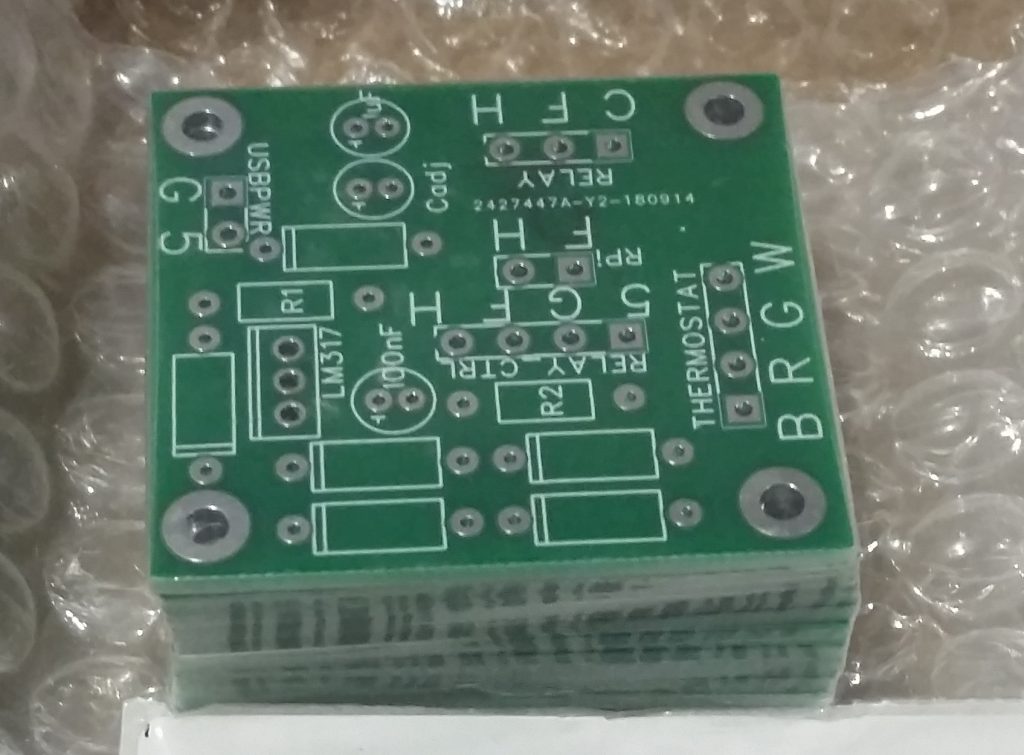
Ten boards, delivered in about a week, for $20 or so. Not bad.
I populated and soldered the first one off the stack (I only really needed one, but it’s the same price for ten), and it works well so far. Custom good-quality PCBs for twenty cents each (plus shipping). I love living in the future.

